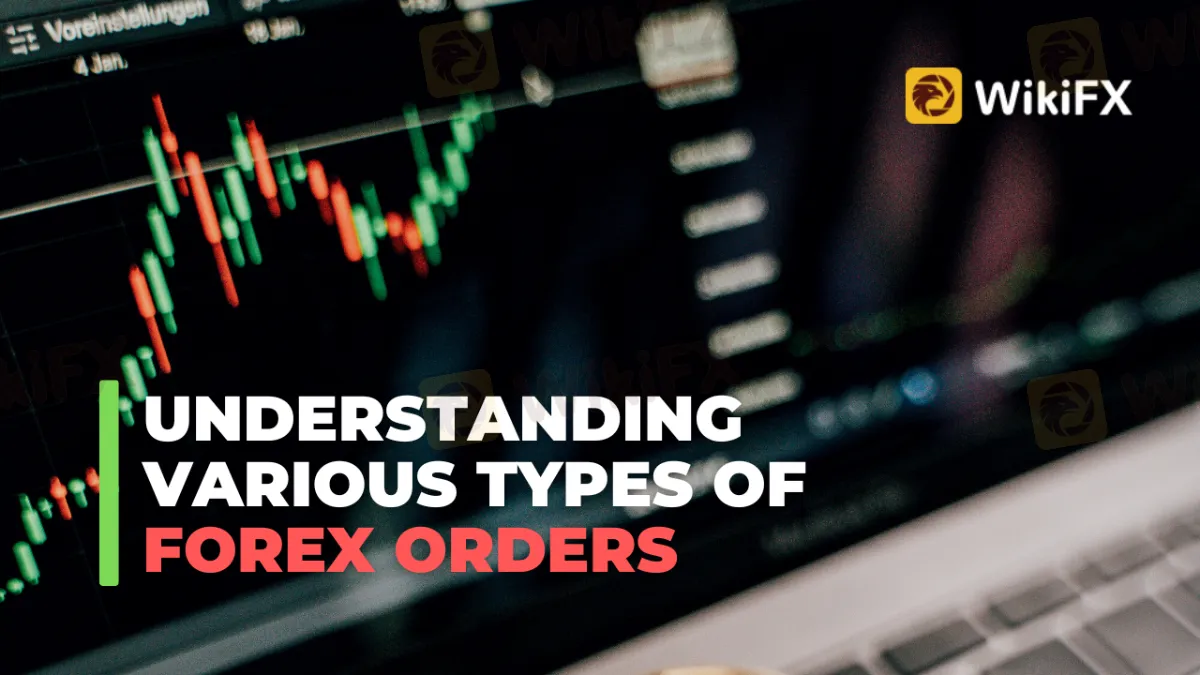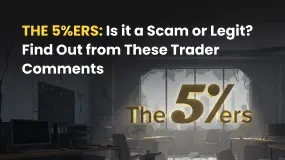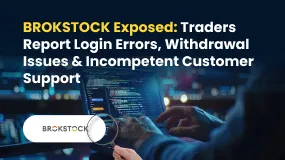简体中文
繁體中文
English
Pусский
日本語
ภาษาไทย
Tiếng Việt
Bahasa Indonesia
Español
हिन्दी
Filippiiniläinen
Français
Deutsch
Português
Türkçe
한국어
العربية
Understanding Various Types Of Forex Orders
Abstract:The word forex order simply refers to how you want to join or exit a deal. There are different kinds of Forex orders that traders can use to manage their trades. Different forex brokers offer a variety of order types that let investors set different limits and conditions for their trades. This lets them enter and leave the market in the right way.

In this post, we will go through the various kinds of forex orders and explain how each one works in reality.
What Is Forex Order
An order is essentially a trader's method of entering or exiting the forex market. Although there are many other forms of forex orders, the most frequent are market orders, pending orders, take-profit orders, stop loss orders, and trailing stop orders.

Market Order
The most popular and basic sort of FX transaction is a market order. When an investor places a market order, he or she instructs his or her broker to buy or sell currency pairs at the best available price at the time.
Scalpers and day traders often depend on market orders to swiftly enter and leave the market in line with their strategy.
Pending Order
A pending order is a trader's instruction to a brokerage firm to purchase or sell securities at a certain time in the future. A pending order puts you in a trade when the circumstances are ideal for your approach and helps you avoid missing a trade even if you leave your computer. You may use four different kinds of pending orders:
1. Buy Limit
The Purchase Limit order enables you to place a buy order that is lower than the current market price. This signifies that the current price level is more than the order value. This order is often made with the expectation that the price will rise after falling to a specified level.
2. Sell Limit
This is obviously the inverse of a buy limit order since you are specifying a certain price at which you want to sell this currency pair. The order permits you to sell at the Bid price, which must be equal to or more than the order price. The current pricing level is lower than the order value. This order is often made with the expectation that the price would decline after reaching a specified level.

As seen in the chart above, buy limit orders are always put below the current price, and as soon as the market reaches the order's price level, a BUY order is opened at the stated price.
If you anticipate a downturn, you may create a sell limit order that will be executed at the chosen price level above the current price. Unless and until the orders are completed, they have no influence on your account margin.
3. Buy Stop
The buy-stop order enables you to purchase at the Ask price that is equal to or more than the order price. When a market reaches the price level of a buy-stop pending order, the purchase order is opened at that price.
This order is often made with the expectation that the price will continue to rise after reaching a specific level.
4. Sell Stop
Sell-stop pending orders instruct the investor to sell at the Bid price, which must be equal to or lower than the order price. The current pricing level is greater than the order value. This order is often issued with the expectation that the price will continue to decline after reaching a specific level.

As seen in the chart above, buy-stop pending orders are always placed above the current price. When a market reaches the price level of a buy-stop pending order, the purchase order is opened at that price. Pending sell-stop orders are always placed below the current price.
Take Profit Order
With take-profit orders, your position is automatically closed off whenever you have achieved a defined amount of profits based on the profit-target order's stated price level. Because the price might abruptly reverse, you must establish a take profit value to automatically take the profit before it goes in the other way.
For example, if you're going long on EUR/USD at 1.1200 and want to exit the position as soon as the exchange rate reaches 1.1230 to assure a profit, you might adjust your 'take profit rate' appropriately to avoid missing out.

Take-Profit orders for BUY trades are always put above the entry / current price, whilst Take-Profit orders for SELL trades are always placed below the entry / current price, as seen in the chart above.
Stop Loss Order
Stop Loss Order If the security price exceeds this level, the whole position will be instantly closed.
A stop-loss order not only protects your trade from a massive financial loss but also eliminates the emotional aspect that might entice you to overtrade and incur even bigger losses.

Stop-Loss orders for SELL trades are always set above the entry / current price, whilst Stop-Loss orders for BUY trades are always placed below the entry / current price, as seen in the chart above.
Trailing Stop Order
The trailing stop order, also known as the profit-protecting stop order, is an order you make to your forex broker to purchase or sell if the currency goes against you. It is similar to a stop-loss order, but the primary distinction is that the trailing stop moves with the price, enabling you to safeguard winnings while also minimizing capital loss if the transaction does not work out.
Conclusion
The kind of forex orders you employ will be determined by the present market position and how you predict the market to go. Understanding the many forms of forex orders and their applications is a fundamental skill.
The forex market may turn against you at any time, no matter how much you prepare, how amazing and comprehensive your trading plan is, or how clever your approach is. The easiest approach to comprehend the various forms of forex orders is to utilize them in real-world trading situations using forex brokers.
Stay tuned for more Forex Educational news.
Download the WikiFX App from the App Store or Google Play Store to stay updated on the latest news.

Disclaimer:
The views in this article only represent the author's personal views, and do not constitute investment advice on this platform. This platform does not guarantee the accuracy, completeness and timeliness of the information in the article, and will not be liable for any loss caused by the use of or reliance on the information in the article.
Read more

The 5%ers Review: Is it a Scam or Legit? Find Out from These Trader Comments
Did you face reduced leverage and hiked fees without any explanation from The 5%ers broker? Do you find The 5%er rules strange for getting a funded account from this prop trading firm? Has the broker closed your trade inappropriately, preventing you from making gains in the forex market? All these allegations have dominated The 5%ers review segment online. Looking at this, the WikiFX team investigated and found some startling comments against the broker. In this article, we have shared those complaints. Read on!

BROKSTOCK Exposed: Traders Report Login Errors, Withdrawal Issues & Incompetent Customer Support
Is your BROKSTOCK trading account full of inefficiencies? Do the recurrent BROKSTOCK login errors prevent you from opening and shorting positions at a favorable price? Has the broker failed to honor your withdrawal requests? Do you face order execution price issues? Has the customer support service failed to resolve your queries? You are not alone! In this BROKSTOCK review article, we have shared some complaints that need a close introspection. Read on to explore them.

OmegaPro Review: Traders Flood Comment Sections with Withdrawal Denials & Scam Complaints
Has your deposit and withdrawal scenario worsened after the initial good experience at OmegaPro, a UK-based forex broker? Does the broker ask you to invest when withdrawing your funds? Did the broker officials trap you with their false promises of compound interest on your deposit? Have you found it impossible to transfer funds from your OmegaPro login to another broker’s account? Do you witness a lack of support when dealing with these unfortunate trading circumstances? These are no longer isolated complaints — they have allegedly become the reason for OmegaPro’s tarnished trust and reputation within the trading community. Read on as we share the OmegaPro review in this article.

Inzo Broker Review 2025: A Complete Look at Features, Costs and User Claims
Inzo Broker presents itself as a modern forex and CFD broker, started in 2021 and registered in Saint Vincent and the Grenadines. At first glance, it offers an attractive package for traders: access to the popular MetaTrader 5 (MT5) and cTrader platforms, different types of accounts for various budget levels, and a wide selection of assets to trade. These features are made to attract both new and experienced traders. However, a closer look shows a big difference between these advertised benefits and the real risks. The broker works under an offshore regulatory system, which gives limited protection to investors. More importantly, Inzo has collected many serious user complaints, especially about withdrawing funds and changing trading conditions unfairly. This mix of weak oversight and serious user claims creates a high-risk situation that potential clients must carefully think about. This review will break down these parts to give a clear, fact-based view.
WikiFX Broker
Latest News
BASF CEO: EU CO₂ Trading Is A "Destruction Mechanism" For European Industry
Is Fyntura a Regulated Broker? A Complete 2025 Broker Review
Zetradex Exposed: Withdrawal Denials, Account Freeze & Bonus Issues Hurt Traders
Is Forex Zone Trading Regulated and Licensed?
PINAKINE Broker India Review 2025: A Complete Guide to Safety and Services
Exness Restricted Countries List 2025 Explained
Is Uniglobe Markets Legit? A 2025 Simple Guide to Its Safety, Services, and User Warnings
Is Inzo Broker Safe or a Scam? An Evidence-Based Analysis for Traders
WikiEXPO Dubai 2025 “Welcome Party” Kicks Off Tonight!
He Trusted a WhatsApp Group and Lost RM659,000
Currency Calculator



